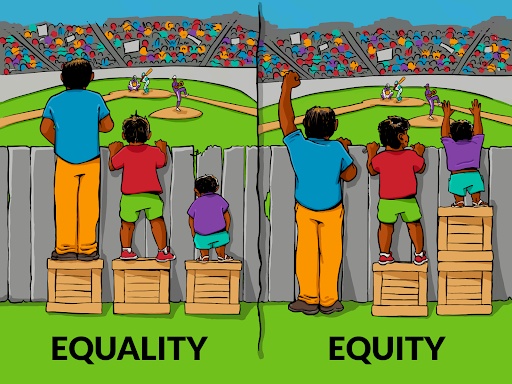Whenever I encounter a senior leader or manager at the beginning of their inclusion and diversity journey, they all ask me the same question: what are the 3 things I need to do to become more inclusive? The bad news is that there are no golden unicorns when it comes to ensuring that you are fully inclusive. It’s a continuous journey which requires you to learn, unlearn and relearn as well as become a hacker.
A hacker is someone who is always looking for what is broken and is constantly making changes to make things better. The fact is that our workplaces are currently broken, and we need to make lots and lots of small continuous changes to help ensure that the workplace is more inclusive, equitable and diverse.

However, I appreciate how overwhelming this can be, so here are my 11 top tips on how you as a manager or leader can be more inclusive:
1. Listen to your team – first and foremost listen to those in your team around you – and listen without judgement. If they tell you they feel excluded, then you are excluding them. This may mean sitting down with them one to one, although it must be noted that often the lack of psychological safety from their perspective might prevent them from being completely open with you. I often get the senior leaders I work with to run an anonymous survey for their historically marginalised staff. In this survey, we simply ask 3 questions:
- What do you think are the biggest barriers to progression for women and other historically marginalised groups in the workplace?
- Please share any micro-aggressions you have received, or witnessed, in the last 12 months in the workplace.
- What’s the one thing men could do differently to ensure that the workplace is more inclusive for everyone?
2. Become more culturally intelligent – we all need to get better at building our cultural intelligence across every diversity characteristic. But in the short term, I would suggest you focus on those characteristics that exist within your own team so that you can start supporting them more effectively. As Maya Angelou once said, “Do the best you can ‘till you know better. Then when you know better, you do better.”
3. Understand your biases better – if you have brain, you have biases. These biases undoubtedly lead to exclusion in the workplace everyday, which is why cognisance of bias is one of the key inclusive leadership traits. A good start would be to understand your own unconscious biases by taking the Harvard Implicit Association test for all the characteristics that exist in your team. It’s also worth learning a bit more about the different types of cognitive biases with resources like Masterclass.
4. Get to know your team better – Diversity is what delivers better decisions, ideas and business results. Inclusion is what allows diversity to thrive. But you can only deliver belonging when you find the things that really connect you (the video below is an incredible articulation of that). You might want to try some of the curiosity questions that we often use when working with our clients, which you can find here.
5. Be more vulnerable – For me, vulnerability is still the key to unlocking inclusive workplaces. The ability to be vulnerable in workplaces is key to building trust and psychological safety, and I have seen first-hand how vulnerability gives others permission to share their innermost thoughts and feelings. Yet our latest Masculinity in the Workplace research shows that only 35% of workplaces value vulnerability (you can download the full report here).
6. Ask your team if they need adjustments – an I&D leader once told me that when they asked their employees whether anyone had any disabilities, only 2% identified themselves as having a disability. However, when they changed the question to whether people would like any adjustments, this number shot up to 14%. Adjustments could simply be how you interact or when you hold meetings. Something I found really useful at my previous consultancy, Utopia, was using Personal User Manuals. You can find my own example here.
7. Call in bad behaviour – Often, it is much easier for an ally to point out behaviour and language that is inappropriate, but part of our responsibility as leaders is also to ensure that it is not left unchecked. However, it’s often better to call it in rather than call it out (unless it was harmful to someone who was in the room). Put simply, there is no value in shaming the person who behaved badly. Often this behaviour comes from ignorance. It’s therefore best to pull someone aside and help them understand why their behaviour is exclusive.

8. Recognise your privilege – it’s important to recognise that we all have privileges, depending on the context. Just being a manager or a leader is a privilege in itself and puts the responsibility on you to ensure that you support and bring forward others that have maybe not had the same opportunities. The video below provides a brilliant visual representation of privilege and should be viewed by every manager/leader. However, you can’t always see privilege in this way, and the previous exercise should help understand where people might need support.
9. Embrace equity – one key tool for providing inclusion is equity. This recognises the fact that providing everyone in the organisation with the same opportunity does not equate to the same outcomes. We need to constantly be thinking about what additional support we need to give certain people based on their individual needs. This can be the provision of a new joiner loan, mentor and sponsorship programmes, reasonable adjustments or other policies which recognise that people may have different needs (e.g. Channel 4’s Menopause policy).

10. Change the culture – alongside providing equity (the boxes in the image above), we also need to break down the systemic barriers to inclusion that exist in the workplace, i.e. the fence. If you would like to be a true ally to your direct reports and your wider team, then you need to work out how you can change the culture that is often so exclusionary. There are several ways you can do this – you might find our Men Leaning in Matrix useful for inspiration. The most important thing is to take action and show that inclusion is important to you.
11. Ensure you have the right support and training – it must be recognised that leaning into I&D can sometimes be challenging. One of the skills you will need to muster is becoming more comfortable with being uncomfortable. Sometimes this will need additional training and support. Be sure to ask for it.
Daniele Fiandaca is founder of Token Man Consulting
You can sign up to Token Man’s Inclusive Leadership panel on 18th September here.

